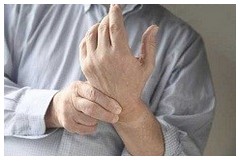5 Physical Symptoms of High Cholesterol Marker.
Knowing the levels of cholesterol in the blood is quite important as efforts to preventing heart disease and clogged arteries. Typically, the probe can be done with a blood test in the laboratory. Simple checks can notify total cholesterol numbers, while for the more complex inspection, we can get additional information such as levels of LDL cholesterol (bad cholesterol), HDL (good cholesterol), and triglycerides. Examination of cholesterol really should be done periodically to keep track of overall body health.
The High Cholesterol Levels and Specific Physical Symptoms
On the other hand, there are physical signs that can be observed to detect high levels of cholesterol. According to Dr. Aulia Sani, a specialist heart and blood vessels of RS Sahid Sahirman, there are some symptoms that indicate a person's cholesterol levels in the blood, which are:
1. Hands and feet often sore
The blood vessels in the legs and hands can also be clogged due to accumulation of cholesterol. This buildup usually occurs continuously and make hands and aching feet.
2. Frequent tingling
Tingling in the hands and feet are the implications of not smooth blood flow in certain body parts. Tingling associated with nerve not getting blood flow. This is because the blood flow becomes viscous due to high levels of cholesterol in the blood.
3. Chest pain left
Left chest associated with the heart, which acts as a blood pumping. Blockage of blood vessels around the heart can cause pain like punctured. The pain may even spread to the neck. Chest pain can also be signs of a heart attack. This condition can be a sign that the levels of cholesterol in the blood is too high.
4. Neck and shoulder sore
Nape and shoulders were aching is also the implication of not smooth blood flow in the blood vessels in the area. not smooth blood is also caused by a blockage of blood vessels due to high cholesterol levels.
5. Often headache in the back of the head
Headache in the back of the head caused by a blockage of blood vessels in the area around the head. This blockage occurs because cholesterol starts forming plaque in blood vessels. If left unchecked, the blood vessels can rupture and cause a stroke.
